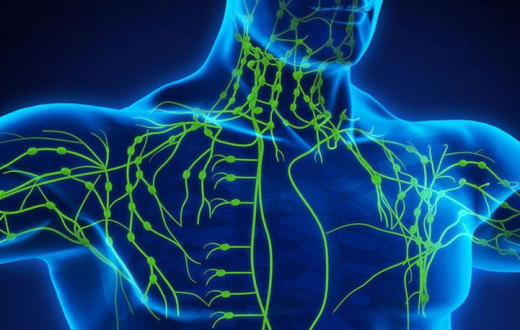By Anuradha Gupta | Posted: September 18, 2019
Key features of the Ayurvedic diet
A famous Ayurvedic proverb says, “When our diet is wrong, medicine is of no use; when our diet is correct, medicine may not be needed.”
A good diet is vital to health, increasing Prana (Life Force), Ojas (Vitality), and building Vyadhi Kshmatva (Immunity).
Ayurveda takes a unique approach to nutrition, and therein lies its strength. Here are some key differences between Ayurveda and other diets:
Ayurveda classifies diet (aahar) as not merely food and liquids.
It also includes breath and sensory perceptions, both of which can be managed with yoga, pranayama, meditation, and lifestyle modifications.
Tip 1: Harvard studies have shown that 8 weeks of meditation can alter the brain’s grey matter. Want to improve your diet? Not only will meditation reduce stress and lend clarity to sensory perceptions (a vital part of our diet), mindfulness will help you make better food choices, too!
Ayurvedic diets are individualized.
We are not what we eat, but what we digest. The same salad or kidney beans could be good for one person but cause someone else dyspepsia. Our diet depends on a few factors:
Prakriti/Vikrati: My earlier article explains this concept in-depth. In a state of balance, we can eat anything while being mindful of our Prakriti. For example, Pitta people shouldn’t overdo spicy food in order to avoid hyperacidity. For an imbalance, we need to pacify that Dosha with its opposite qualities. Vata is drying, and for a Vata imbalance, we recommend adding moistness through hydration, soups, stews, and oleation.
Agni being different for everyone explains why some Pitta people turn hangry (angry when hungry) or Vata ones have variable hunger. Ayurveda has always acknowledged the gut-brain nexus. It theorizes that Ama, or undigested food (as well as physiological or psychological toxins, like trauma) causes most ailments.
The Six Tastes or Shadrasa: The Six Tastes concept (based on the content of 5 elements in food) is similar to that of food types (carbs, proteins etc.) If we are healthy, we should have all six tastes in every meal if possible to avoid nutritional deficiencies. Different Prakritis/Vikratis need to favor certain tastes and avoid overdoing others.
Chart I: Shadrasa (Six tastes)
Taste | Action | Source |
Sweet | Builds tissues, calms nerves | Whole grains, natural sugars, sweet fruits (bananas, mangoes), dairy, pumpkins |
Sour | Cleanses tissues, increases absorption of minerals | Sour fruits (Amla, lemon), yoghurt, fermented foods |
Salty | Improves taste, lubricates tissues, stimulates digestion | Salt, sea vegetables, black olives |
Bitter | Detoxifies and lightens tissues | Dark leafy green vegetables, spices like turmeric, Black tea |
Pungent | Stimulates digestion, metabolism | Garlic, onions, ginger, hot spices, eg, Cardamom, Chili Peppers |
Astringent | Absorbs water, lightens tissues, dries fat | Legumes, green beans, turnips, unripe bananas, green grapes, pomegranates |
Tip 2: Amla (Indian Gooseberry) has all 5 tastes except Salty. Sprinkle Himalayan Salt and this Immune Booster as a Snack has all 6 Tastes!
Chart II: Doshas and Tastes
Dosha | Tastes to Favor |
Vata | Sweet, Sour, Salty |
Pitta | Sweet, Bitter, Astringent |
Kapha | Pungent, Bitter, Astringent |
Classification of foods based on their impact, as Sattvic (lending balance like most fruits and vegetables), Rajasic (causing restlessness like caffeine or pungent food, like onions and garlic) and Tamasic (causing dullness, like pickled foods or leftovers). Other subtle qualities of foods are addressed, like Virya (heating and cooling potencies), Vipaka or the post-digestive effect, which explains why lime which is sour turns sweet post-digestion; it’s a fascinating science!
Anupaan, or what liquids to ingest and how, is detailed. For example, cool drinks like coconut water and pomegranate juice are good for Pitta, while warm ginger tea is good for Vata. The general rule of thumb is to drink 1-2 glasses of water on an empty stomach upon waking (with lemon or honey if it suits you) and sip warm water or water at room temperature through the day (cold water dampens agni). Avoid drinking water with meals, or sip warm water or tea like ginger tea.
Basic principles of nutrition
Eating three regular meals (within about 45 minutes daily) matters most in enhancing health. Our meal should be limited to a cupped hand measure or Anjali. Gurudev Sri Sri Ravi Shankar expands on this here.
We are part of nature and will go back to nature. This explains why an apple is easier for us to assimilate than a bag of chips. Food should be fresh (preferably ingested within 2-8 hours), seasonal, organic, local, and with minimal processing. However, Ayurveda recommends going easy on raw vegetables, especially over long durations (with exceptions: Kapha people, or during Pitta season, if you have a strong Agni, and if it is Satmiyam). Warm, unctuous food with appropriate spices is considered easy to digest.
Cook and eat in a calm state, chew 32 times, and don’t eat on-the-go or while watching a show. Eat less, exercise more, and eat only when the previous meal is digested.
Virudhahar: some foods are incompatible, like honey with hot water or fish with milk. Fruits should be eaten separately from one another.
Satmiyam foods, or ‘foods that we are used to’ are easier to digest. For example, people are used to eating yoghurt at night in South India, but it’s contraindicated for others.
Daily and Seasonal Rhythms
Dinacharya and Ritucharya, or daily and seasonal rhythms, influence our diet. For instance, Agni is highest during lunch (Pitta time), when we can have a big meal. Similarly, during fall or Vata season, you should have Vata-pacifying foods.
Cleansing
Yoshinori Ohsumi won the Nobel Prize for his research on fasting and autophagy, which corroborates the Ayurvedic practice of cleansing. However, Ayurvedic detoxes are individualized (For example, Vata people shouldn’t generally fast).
Ayurvedic Intake Case Study
Food is medicine. During an Ayurvedic intake consultation, we delve into our Client’s diet and lifestyle and our recommendations address these for ALL health conditions and weight management.
To recap, we talked about the stressed Smith family in Part 1 of this article;
John (Kapha Prakriti, Kapha imbalance) is obese with high cholesterol. Jane (Pitta Prakriti, Pitta, Kapha and mild Vata imbalance) is overweight with hypothyroidism and anxiety, exacerbated by yo-yo dieting. Their son, Jack (Vata Prakriti, Vata imbalance) has food allergies and is underweight. There are a few issues to address with this family.
They all have Ama and issues with Agni. Ama can be managed with herbs, ginger (as tea or in food). For Mom, with excess Pitta, coriander, cardamom or dry ginger tea would be better.
Tamasic nature of food; processed food, junk food, and leftovers fuel metabolic disorders and should be avoided.
We discussed their Monday fast-food meal with burgers and fries; a cause of diseases is Pragna Apradh (an insult to the intellect), when we undertake, knowingly, something harmful to our health, like ingesting junk food or overeating. When Prana (energy) is high with nutritious food and practices like meditation, we are less likely to fall into this trap.
Especially for the parents, simple, fresh, convenient recipes, plenty of fruits and vegetables, less heavy food and sweets, Kapha-pacifying food for John and Kapha-Pitta pacifying food for Jane, herbal support, basic modifications in lifestyle, some yoga, breathwork and meditation, will help them feel a lot better and way more energetic!
Expanding Jack’s Case
Allergy management in Ayurveda is done through enhancing immunity (A possible herb choice is Indukantham – a Vata-balancing immune-booster that aids gut health and pathological emaciation).
Vata-Pacifying Diet: Jack needs to eat warm, soothing, spiced, nourishing and unctuous food; soups, stews, hot cereals, herbal tea and sweet fruits; favor sweet, sour and salty tastes. He needs to minimize cold, junk, processed food and drinks, caffeinated/carbonated drinks and avoid pungent, bitter and astringent tastes.
Comparing healthy, traditional diets with the Ayurvedic diet
Picture the Mediterranean diet! A yummy platter of fresh veggies, fruits, nuts, legumes, whole grains and herbs with extra virgin olive oil. This diet is nourishing and keeps our energy high without sugar crashes! Some healthy traditional diets include the Nordic, West African, (parts of) Asian, rural Japanese, French Paradox and Blue Zone Diets (Areas of enhanced health and longevity).
Traditional diets are similar to the Ayurvedic diet since they are ethnic to the place of origin, involve traditional, fresh preparations, smaller portion sizes, discourage processed foods and meals are a social event. Lifestyles are healthier with more walking or exercise. They commonly favor fresh, local, seasonal foods, plenty of fruit and vegetables, wholegrain cereals, beans, fish, and moderate amounts of lean meat, with healthy fats like olive oil. Major drinks are water, tea, wine or fermented drinks. Ayurveda would also view them as Satmiyam (traditional foods people can digest better!)
Blue Zone diets are primarily plant-based, and people rely on nature, outdoor exercise, routine, and a sense of purpose and community. Then there’s the healthy French Paradox with high saturated fat, cheesy but high quality food in way smaller portions, and people walk a lot!
Even the 100 +nations’ food based dietary guidelines (FBDG) now give holistic, lifestyle-based suggestions, the chief being a balanced diet, a reduction of salt and sugar, increasing fruit and vegetable consumption, cutting down on fat, getting active, moderating alcohol ingestion, and reducing red/processed meats. Some guidelines address sustainability, too: Sweden and Germany advise moderating meat because of its environmental impact.
It’s a good time to pause and reflect…what simple changes can we make to our diet and lifestyle so we live to our highest potential?
This is Part 2 of a series on Ayurvedic nutrition, Read Part 1 here.
Anuradha Gupta is an Engineer, MBA and Ayurvedic Wellness Counselor. She has a corporate background and volunteers for Art of Living and other nonprofits. You can find her on Facebook or on LinkedIn.





























